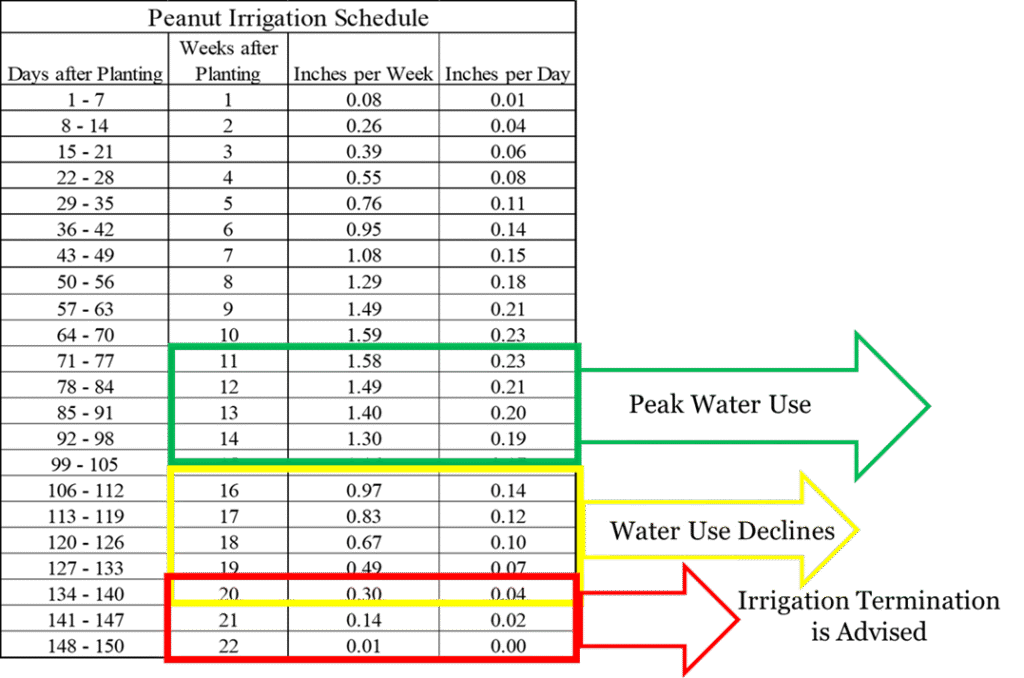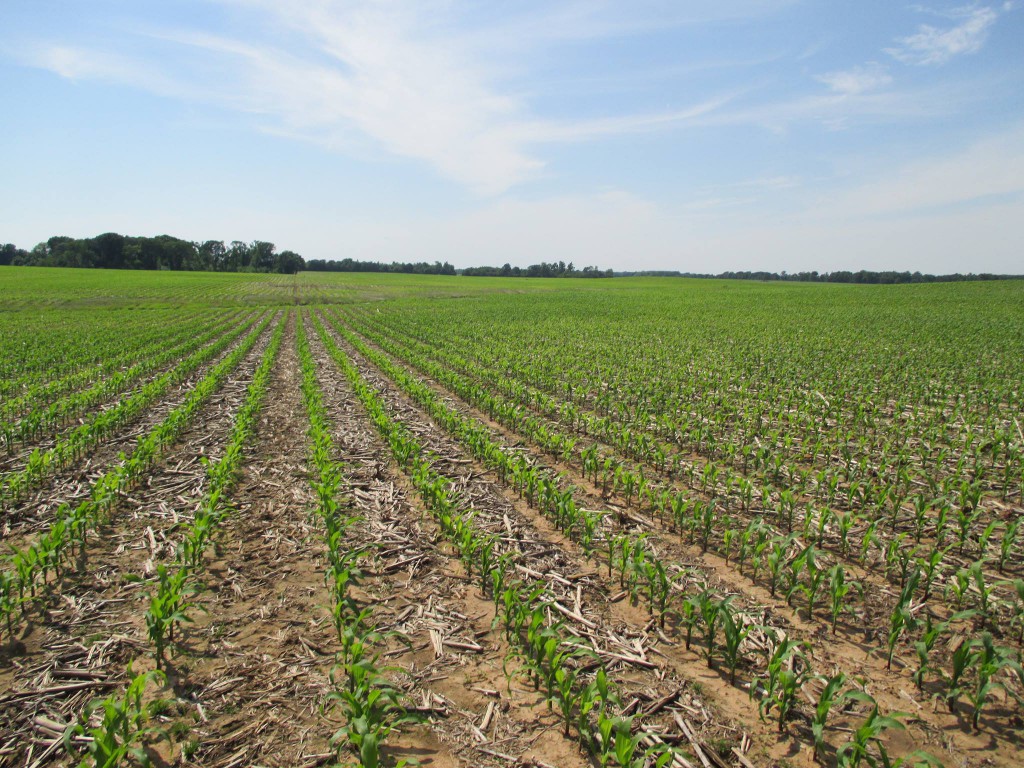By: Wesley Porter and Sarah Beth Thompson
We are now into mid- to late- August and are moving into the end of the season very rapidly. While some of the later planted crops are just reaching peak water requirements, many of the earlier planted cotton and peanuts are moving on closer to maturity. So, similar to cotton I wanted to get some information together on finalizing irrigation on peanut.
For good or bad, unlike corn and cotton, peanut does not have a physiological irrigation termination point. Anyone I have ever talked to about determining when to stop irrigating peanuts have told me that it is more of an art than a science. But isn’t a lot of what we do in Agriculture? We use the science and apply it in an imperfect condition based on our experience and local knowledge? That is exactly what is required here.
So first we need to look at our peanut water use curve and determine where we are on it. As shown in the graph and table below, once we pass the 10 to 12 week mark our water requirements begin to decline. Once we reach the 120 DAP timeframe, we will need to consider where our peanuts are on maturity and start making decisions.


Thus, once 120 DAP, or approximately 2100 GDD’s are reached maturity checks are recommended. Depending on variety, we typically say that most of our runner peanuts have reached “optimum maturity” around 140 DAP or 2500 GDD’s and we should consider digging. Now we all know that there are exceptions and caveats to this statement. For example, 12-Ys will need to stay in the ground about 2.5 to 3 weeks on average longer than 06-Gs and so on. If we are doing our job we are pulling maturity samples and having our UGA Extension Agent blast them and put them on a maturity board to check for digging date approximations then this should not be a problem.
When we know our estimated digging date for each field, we then need to consider where we currently stand on soil moisture in each field, when our last irrigation application was, when the last rainfall occurred, and what the near-term forecast looks like. There are too many “if this is the case then do this” scenarios to cover, so I am going to try to be succinct.
If you have:
- A short window until digging, we have adequate soil moisture, and you are ready to dig, I would suggest terminating irrigation.
- A short window until digging, but you are dry and no rainfall is predicted, I would suggest applying another irrigation event, conversely if guaranteed rain is predicted, do not irrigate.
- A long window until digging, are drying out, no rainfall is predicted, then irrigate.
- A long window until digging, have adequate moisture, and rainfall is uncertain, I would monitor the field and the weather conditions and make an appropriate decision when you less than a week do digging.
- And obviously, there is rain forecast, and it comes, then rely on the rain and save the irrigation applications.
One of the biggest concerns during the end of the season peanut irrigation is digging. We run into this every year it seems, but conditions that are too dry will wear digger blades extremely rapidly and make it nearly impossible to invert the peanuts. In many cases, farmers have had to stop digging dryland fields until rain was received. If irrigation is available, a 0.5-to-0.75-inch event the day or day and a half prior to digging can help alleviate this problem. Conversely, digging in conditions that are too wet can cause excessive soil to stick to the shell and bring more foreign material into the combine.
Back to my earlier statement, this is more of an art than a science. Hopefully, the data and recommendations here will help you narrow down your exact irrigation termination point. One thing both Scott Monfort and myself do not recommend is terminating irrigation on all of your peanut fields once you have started digging the first field. Remember that you planted your peanuts over a month or more timespan and will harvest them the same. Thus, when looking at the water requirement curve you will have peanuts spread between 4 to 6 weeks in maturity or potentially more. Thus, the later planted peanuts will still need irrigation. Do not short them the last month or more of water and lose yield.
